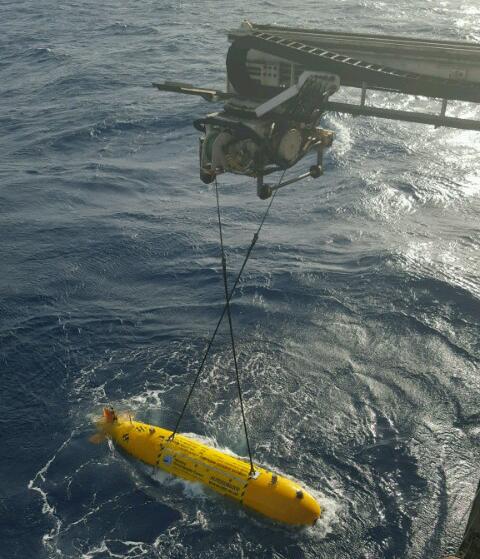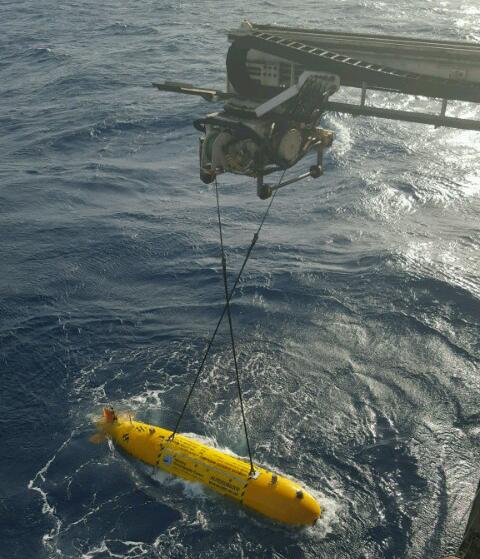 Outreach
OutreachTeacher at sea
UK schools are going live to the Mid-Atlantic for real-time geophysics from a teacher at sea.
 Outreach
OutreachUK schools are going live to the Mid-Atlantic for real-time geophysics from a teacher at sea.

UK schools are going live to the Mid-Atlantic for real-time geophysics from a teacher at sea.
Angela Bentley, a teacher from Stockport, Greater Manchester, is working on board the RRS James Cook, a Natural Environment Research Council research vessel currently investigating the Mid-Atlantic Ridge, a range of underwater volcanic mountains where the Earth’s crust is forming. Angela has spoken live to schoolchildren about the research on the James Cook and is also providing resources for teaching. She also writes a lively blog (teacheratseablog.wordpress.com) that covers the everyday life of the ship, as well as the research, highlighting the many roles – from apprentice to academic – needed to keep a research ship at work. Rubbish, faults and rock properties with reference to biscuits have featured recently.
A lot of the work relies on the submersible Autosub, a yellow submarine (yes, really) that runs autonomously for up to 24 hours, following a survey pattern. Autosub both scans the seafloor with sonar, mapping its shape and depth from around 100 metres above, and recording the magnetic signal from the ocean floor rocks. Magnetic stripes resulting from crust formation at times of normal and reverse magnetic field show the history of the ocean floor; Autosub records them in detail. Autosub also measures the thickness of sediment on the seafloor and electrical changes in seawater that can indicate, for example, the location of hydrothermal vents below.
That’s not all that’s going on on the RRS James Cook – there’s also a 3D seismic survey involving more than 50 ocean bottom seismometers, airguns to generate a seismic signal and a streamer array towed behind the ship. Each of those ocean bottom seismometers has to descend safely the 3 kilometres to the seafloor, and make its way back up after the survey, to be deployed elsewhere – quite a logistical challenge, on top of the technical skill needed to design and build kit robust enough to survive the deep sea. Find out more in the research blog about the seismic surveys: obsatsea.wordpress.com
The equipment and the ‘fish’ that support its communication with the ship were built at the National Oceanography Centre in Southampton; researchers on the expedition come from the universities of Birmingham, Cardiff and Durham. The expedition and the Teacher at Sea project are funded by NERC.
If you would like to submit an article to A&G Forum then please go here.